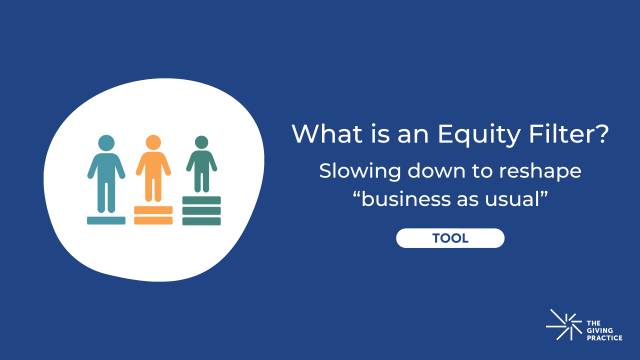
Many years ago, I learned the concept of “Structural Tension” from Robert Fritz, one of the founders of Innovation Associates along with Peter Senge and Charlie Keifer. IA was a company dedicated to helping people build organizations using principles of the creative process. I often refer to “Structural Tension” as “Creative Tension,” because that phrase is readily understandable by children. Yes, you can teach this to children. Here is how it works.
Stretch a rubber band between your two hands so that one hand is on top of the other. Imagine that your bottom hand represents current reality (the way things are) and your top hand represents your vision (what you would like to see in the world). Notice the tension in the rubber band. This is energy created by holding current reality and vision simultaneously, and it is this tension—this energy—that allows us to create the results we want. If you let go of either end of the rubber band, you will notice that there no longer is energy in the system. All you have is a limp rubber band.
There is another dynamic at play here, and that is “psychological tension,” or how you feel about being in structural tension. We all have our own thresholds for tolerating psychological tension. Some people can stretch their rubber bands far more than others. Separating creative and psychological tension can help you stretch a little further than you would if you experienced all the tension as psychological. Let’s look at my rubber band right now.
Yesterday was Thanksgiving. My desk, countertops, tables and floors are covered with worthy programs seeking funding. They all satisfy my guidelines for giving, my vision for the world. My current reality, however, is that I have a cast on my right foot and, for now, I cannot walk or drive. I have ten hours of home care a day to ensure that I do not “reach” for what I want. My finances and body are strained way beyond their comfort zone IN CURRENT REALITY. The easiest thing in the world for me to do is nothing (doctor’s orders). My limp rubber band would lead me to depression.
Instead, I am refocusing on my vision even as I look at current reality squarely in the eye. It serves me and the world to give what I can—maybe not what I have been able to do in the past, but what best serves the whole right now. I am working from the center of the paradox between current circumstances and what I know could be possible, even if not during my lifetime. Here is an easy way to remind you to stretch your rubber band. (This is the part that children understand.)
Write your name with a permanent marker on a thick rubber band. Try it, and watch yourself stretch. I carry mine everywhere — wrapped around my checkbook works well. It holds my pen and receipts and reminds me to give strategically.
I use Creative Tension as a conscious way to create intention. It has helped me tremendously in founding or co-founding three social profits, one of which is a small, private foundation.
When I see an opportunity to give, I want to know first what the organization’s vision is. What is its highest purpose? Then I ask them to tell me a story that illustrates what they would like to create in the world. I listen with loving curiosity. Does their story touch my heart? Then I look to see what current reality is: social need, existing programs, leadership, financial strength and flexibility, and relationships with collaborators. I wonder, “Is there alignment between current reality and their vision and mine? Do I know others who could help them, philanthropically or programmatically? Is it beneficial for us to be in relationship with each other? I check the felt-sense (heart-sense) as well as the cognitive, mind-sense.
I find recognizing the Creative Tension that comes between vision and reality is especially helpful when the challenge we are facing is complex and paradoxical. I do not have an ounce to give at the moment, and giving is my best medicine. Both are true. You can hold Creative Tension between any two points in paradox. The learning, creative edge is usually in the middle. This idea goes back to Aristotle. Put another way, Creative Tension allows us to lead in ambiguous times and circumstances. These are such times. What does democracy ask of us? What is the leadership role of philanthropists in answering this ancient question?
Why is intentional philanthropy important? Impact. Louis Pasteur said that, “Chance favors the prepared mind.” Philanthropists have the luxury of operating without term limits. We have the freedom to imagine what is possible even if not probable from the perspective of current reality alone. Using our inner and outer resources, we have the freedom to do what Parker Palmer would say, “We cannot not do.”
The practice of Creative Tension has helped me grow the depth and breadth of my wisdom, always a work in process. It has made me a better listener, inside and out. It has taught me tremendous humility as I have learned to create and adjust (realign with vision when I have strayed off course) alone and in good company. It continues to be a valuable tool of discernment as I allocate limited resources. There is much good work being done in the world and great need. The American writer and theologian, Fredrick Beuchner said, “Your calling is where your passion meets the world’s needs.” Creative Tension has helped my life purpose emerge and express itself. It helps me know how I can use my resources to best serve.
For more information about Reflective Practices, please click here.



